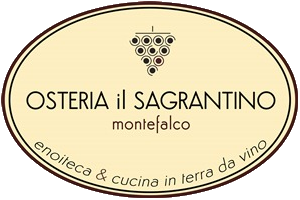Famous throughout the world for the quality of its food and produce, Italy has its beating heart in Umbria. This small peninsular region offers all that even the most demanding of palates could desire.
The king of Umbrian cuisine is without doubt the prized black truffle of Norcia and Spoleto, (tuber melanosporum), followed in second place, (and for some, first), the renowned and precious white truffle. The truffle is a fungus that grows underground, in symbiosis with wide-leafed plants, above all with the broad leaf oak and the holm oak, but also with the hornbeam and walnut trees and it prefers chalky, sedimentary, well-drained soils that are strewn with forest debris. Its development begins in September and it comes into maturity from the beginning of December through to early March. The truffle is widely used in a number of gastronomic dishes, including lightly scrambled eggs, as a condiment for many types of pastas, (the famous local handmade strangozzi),or coarsely grated over char-grilled meats and or raw meats, and not to mention its use as an accompaniment to various types of cheese. In short, between January and March, you can’t pass up the chance of sampling this star of the Umbrian cuisine.
But Umbria is also the land of legumes: Castelluccio di Norcia is the zone in which Lentils are cultivated and they can also be found in the great high plains of the Sibillini mountains, at more than 1300 metres above sea level. Lentils are an important feature of New Years’ festivities, together with stuffed pigs trotter, and is generally used in soups and purees. Other typical local legumes are the chickpeas, roveja and broadbeans, and these also play an important part in the cuisine of the region.
Roasted meats are enjoyed throughout the region, particularly in the Valnerina around Norcia, where large quantities of sausages, pork chops, ribs and steaks are consumed, mostly in the cooler seasons when the meats are cooked over wood coals.
Porchetta: every self-respecting Umbrian eats a fair quantity of this spiced meat which consists of a whole deboned pig that is flavoured with salt, pepper and fennel. The preparation involves carefully selecting a year-old pig with a maximum weight of 100kg. After being killed and the blood drained, it is immersed in a vat of boiling water to facilitate the hair removal. It is then washed, opened , cleaned, deboned and filled with the seasoning: salt, pepper, whole garlic cloves, and according to tradition, diced liver and spleen is added together with handfuls of wild fennel. Once it is well seasoned, the pig is firmly tied with twine then speared with a rod that extends from both extremities, and which is also useful for transport. Then it’s into the oven where it cooks for between two and five hours, according to the size, and it is checked from time to time during the cooking process. The freshness is indicated by the crunchiness of the crust, the fatty crispy skin. The meat is traditionally served in fresh bread rolls with a bit of crust added. The perfect accompaniment is a glass of artisan beer or a red wine “fresh from the cellar”, particularly a MONTEFALCO DOC RED.
From the pork we also have an infinite variety of salami: prosciutto (in particular from Norcia), dried sausage, capocollo, cured pork neck and pork cheek. There is no limit to the number of ways of preparing salami.
Cheeses: above all, pecorino which comes in many forms, and there is also goat and cow’s cheese, with or without the crust. Umbrian cheeses are often accompanied by a selection of honey or jam, according to taste.
Mushrooms and seasonal fruit and vegetables: the Valle Umbra flourishes with an abundance of fruit and vegetable gardens, with artichokes, tomatoes, zucchini, salad greens of every type and a variety of fruit trees. The forests, hillsides and mountains provide wild asparagus in the spring and a rich offering of mushrooms in the cooler months, including porcini, egg mushrooms, pine mushrooms, turini, spignoli as well as wild spontaneous herbs throughout the year.
The green heart of Italy, Umbria is one of the top national suppliers of culinary raw materials: every month of the year it has its ‘king’ of the kitchen, each of which can be perfectly matched with one of the great local wines such as Sagrantino, Rosso di Montefalco, Grechetto or Trebbiano Spoletino. It is impossible not to fall in love with the infinite variety of Umbrian gastronomic delights.






